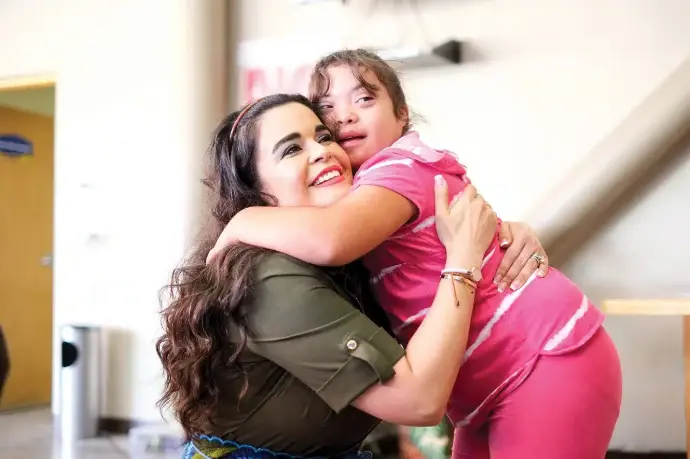


Disability and Human Rights
A disability is a condition that causes a person to be considered disabled. This means that the subject in question will have difficulties carrying out everyday and common tasks that, for the rest of the individuals, are not complicated. The origin of a disability is usually some disorder in the physical or mental faculties.
For example: "The authorities must take into account the needs of people with disabilities", "In my case, disability has never been an excuse to stop doing things", "Moving through these streets when you have a physical disability is almost impossible".
THE PERCEPTION OF DISABILITY
Over the years, disability has been perceived in different ways by society. In the 20th century it was linked to a certain function that was classified as damaged in comparison to the general state of a subject. It could be a physical, intellectual or other type of disability, caused by a mental disorder or a chronic illness. Based on the above, we have to emphasize that basically when we talk about physical disability we are referring to the absence or decrease in motor capabilities that a person has, which means that it is very difficult for them to carry out different activities of routine life. Currently, the aim is to ensure that disability does not impede the integration and adaptation of people to society.
CLASSIFICATION ACCORDING TO TYPE
Problems during pregnancy or at birth, as well as various accidents that could have caused serious damage to your body, and specifically in areas such as the spinal cord, are some of the main causes that cause someone to have a physical disability. An example would be: "Manuel suffers a disability as a result of a traffic accident that now makes him use a wheelchair."
There is also what is known as psychological disability. This specifically is what arises in a human being as a consequence of the fact that he or she is suffering from schizophrenia, bipolar disorder or Asperger's syndrome, among others. All of this means that he has difficulties when it comes to integrating and behaving in the social sphere.
And finally we have mental disability. This name refers to someone having mental development and functioning that is below average. For all this, we could establish that among people who have this type of disability would be those who have Down syndrome as well as all those who, due to problems during childbirth, traffic accidents or prenatal injuries, have seen their intellectual capacity diminished.
DISABILITY AND INTEGRATION
In recent years, disability began to be considered from a human rights perspective. The objective became the integration of the disabled into the community, facilitating this based on the idea of accessibility. This last concept (accessibility) contemplates the adaptation of environments and devices so that disabled people can use them in the same way as everyone else. For this, certain technical aspects need to be considered that reduce barriers for those who suffer from a disability (such as ramps for people who move in wheelchairs or traffic lights with sound for the blind).
Data and numbers
- An estimated 1.3 billion people — or 1 in 6 people worldwide — suffer from a significant disability.
- Some people with disabilities die up to 20 years earlier than people without disabilities.
- People with disabilities have twice the risk of developing conditions such as depression, asthma, diabetes, stroke, obesity or oral health problems.
- Inaccessible health facilities are up to 6 times more difficult for people with disabilities.
- Inaccessible and unaffordable means of transportation are 15 times more difficult for people with disabilities than for people without disabilities.
- Health inequalities arise from the unfair situations faced by people with disabilities, such as stigmatization, discrimination, poverty, exclusion from education and employment, and the barriers they encounter in the system itself of health.
General view
Disability is part of being human and is inherent to the human experience. It is the result of the interaction between conditions such as dementia, blindness or spinal cord injuries, and a series of environmental and personal factors. It is estimated that 1.3 billion people, or 16% of the world's population, currently suffer from a significant disability. This figure is increasing due to the growth of non-communicable diseases and the longer life spans of people. People with disabilities are a diverse group, so their life experiences and health needs are affected by factors such as sex, age, gender identity, sexual orientation, religion, race, ethnicity and economic situation. People with disabilities die earlier, have poorer health and experience more limitations in their daily activities than others.
Factors contributing to health inequalities
Health inequalities arise from the unfair situations faced by people with disabilities.
- Structural factors: People with disabilities experience ableism, stigmatization and discrimination in all facets of their lives, which affects their physical and mental health. There are laws and policies that deny them the right to make their own decisions and allow a range of harmful practices in the health sector, such as forced sterilization, non-consensual admission and treatment, and even institutionalization.
- Social determinants of health: Poverty, exclusion from education and employment, and poor living conditions increase the risk of people with disabilities suffering from poor health and not having their health needs met. Deficiencies in official social support mechanisms mean that people with disabilities depend on the support of their families to participate in health and community-related activities, which not only harms them, but also the people who care for them. (mostly women and girls).
- Risk factors: People with disabilities are more likely to have risk factors for non-communicable diseases, such as smoking, poor diet, alcohol consumption and lack of physical activity. This is largely due to the fact that they are often left out of public health interventions.
- Health system: People with disabilities face barriers in all aspects of the health system. For example, lack of knowledge, negative attitudes and discriminatory practices among health care personnel; inaccessible facilities and information; and lack of information or data collection and analysis on disability. All of this contributes to the inequalities that this group faces in relation to health.
International frameworks
Under international human rights law and, in some cases, national law, countries have an obligation to address the health inequalities faced by people with disabilities. There are two important international frameworks regarding health equity for people with disabilities.
The Convention on the Rights of Persons with Disabilities requires States Parties to ensure that persons with disabilities have access to the same free or affordable health care and of the same variety and quality as other persons.
The World Health Assembly Resolution on the highest attainable standard of health for persons with disabilities calls on Member States to ensure that persons with disabilities receive effective health services as part of universal health coverage; equal protection in emergencies; and equal access to cross-sector public health interventions.

 IHRO NEWS
IHRO NEWS









